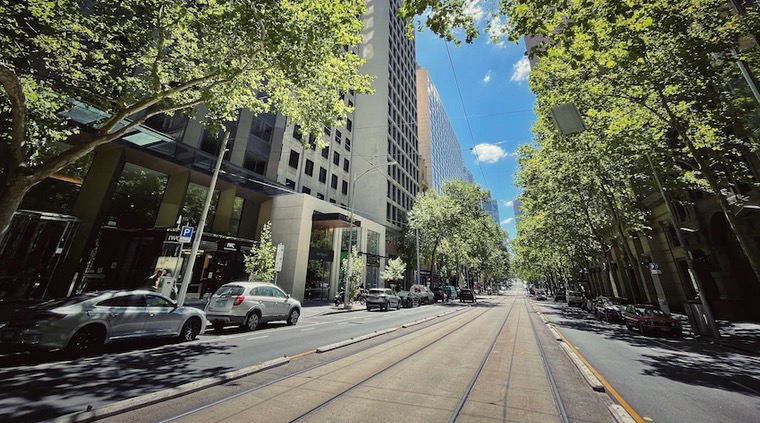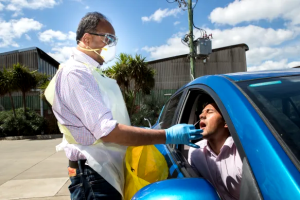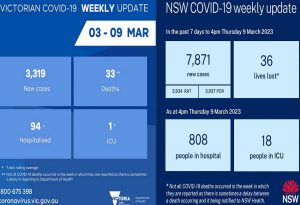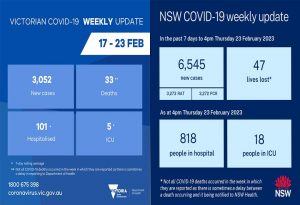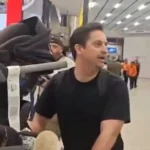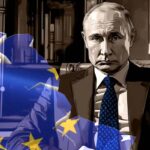IMAGE: Even though lockdowns have officially ended, central Melbourne remains quiet as Omicron cases surge.(ABC News: Peter Drought)
Source: ABCnews

Two months ago, Premier Daniel Andrews said Victorians could expect a summer filled with the “normality we’ve all craved” due to the state’s strong vaccination coverage.
“If you’re fully vaccinated … then your life will be back to normal, you’ll be able to enjoy all of the things that you have yearned for and miss and desperately worked so hard for,” Mr Andrews said as the state arrived at its 90 per cent vaccination target.
In a way, the statement still holds. The government has barely introduced major restrictions since then, apart from the closure of dancefloors and light indoor density limits.
But as a wave of Omicron infections wreaks havoc across workplaces and the healthcare system, data suggests Victorians are voting with their feet and staying close to home.
University of Melbourne mobility analyst Rohan Byrne said mobility in Melbourne had “plummeted” to its lowest point since the last lockdown, even compared to previous holiday seasons.
He said the size of the fall could not be fully accounted for by the hundreds of thousands of Victorians isolating as cases or close contacts.
“This is systematic, mass, stay-at-home behaviour, the likes of which we usually see during deep, organised stage four-style lockdowns,” he said.
Mr Byrne said mobility at the moment was roughly equivalent to the 2020 period before Melbourne moved from stage three to stage four lockdown.
“We’re still doing things like we’re going to the park, we’re going to the beach on hot days, you can see that very clearly,” he said.
“But generally, for that ordinary day-to-day travel, be that to a workplace or to a friend’s house or family, that travel is no longer happening.
“And that trend is something that we’re seeing all across the city.”
Mr Byrne said that trend extended to Melbourne’s outer suburbs, where lower socio-economic communities had been among the first to go into lockdown this time around.
While he said part of it would be due to Omicron hitting essential workers and those on lower incomes harder, it also spoke to that community’s hard-learnt appreciation of the “perils of this virus”.
“And that really untangles that narrative that we had, you know, all the way through 2020 and 2021, where there was this fear, there was the suspicion, that there were other people somewhere else that weren’t doing the right thing,” he said.
“We really are all in this together and the data proves it.”
There are fewer CBD trips for shopping and dining
There are other signs, too, that highlight a shift in focus from enjoying the freedoms of a reopened economy to navigating the pressure caused by the rapid rise in Omicron cases.
Victorians are less interested in finding restaurants or cafes to enjoy than they are in finding a rapid antigen test (RAT), for example.
It’s quieter on our roads, but the timing of an Omicron wave during the state’s summer holidays can make the picture complicated.
It’s usual to see a lull in public transport use over the summer holidays, and network and road upgrades have caused disruption to some services.
Nonetheless, Friday’s Google mobility data, which compares activity to a pre-pandemic baseline of several weeks over January and February in 2020, showed retail and recreation activity in the City of Melbourne falling 62 per cent below the baseline.
Public transport usage in the city centre has fallen to 73 per cent below the baseline.
The Department of Transport’s figures show public transport usage steadily rose through December to hit 83 per cent of February 2020 levels — before crashing to 32 per cent.
It’s a similar story on the roads.
Business groups have been sounding growing alarm about the trend for weeks, warning the unofficial “shadow lockdown” is dealing significant damage to the bottom line, but this time without significant government support.
The Victorian Chamber of Commerce and Industry’s acting chief executive Scott Veenker said customer numbers were dwindling across hospitality and events sectors, and the surge in infections was also putting pressure on staffing.
The chamber is calling on federal and state governments to offer free RATs to small and medium-sized businesses, and suggesting a one-off payment equivalent to three weeks of support under the joint business packages released during previous lockdowns.
It remains to be seen how this unofficial lockdown will affect the Australian Open, which has only just begun in Melbourne.
While session tickets were capped at 50 per cent last week, the opening day saw 25,206 attendees on Monday.
That’s a higher turnout than the first day last year, when 17,922 attendees were recorded.
This time, the end of lockdown is up to Victorians
Mr Byrne said a “shadow lockdown” was a fair description for the situation.
“It is a true lockdown, but of course it wasn’t announced and therefore we haven’t entered it all at once, and because it wasn’t announced or planned, we’re not going to be able to exit it all at once either,” he said.
In that way, he predicted it would differ to the “U shape” of mandated lockdowns, with a longer tail in and out.
He said the lockdown, which had “sort of emerged organically”, would also bring with it different levels of anxiety, uncertainty and confusion for some people.
“There’s going to be friction between people, because different people are going be to making a decision on the basis of their own risk profiles,” he said.
“And they’re going to disagree — whether that’s employers or family members or friends — when you go to cancel a social engagement because you don’t want to go out and catch Omicron.
“In the past, you could say it’s OK, it’s the government, it’s the policy, but that’s not what we have right now. So it’s going to be in some ways [it will be] more stressful for a lot of people.”


